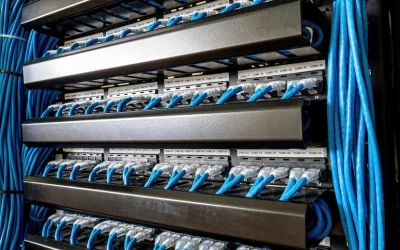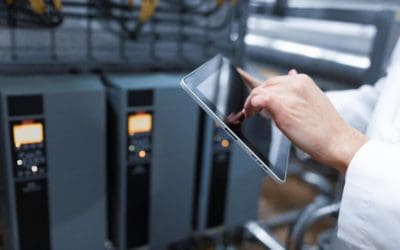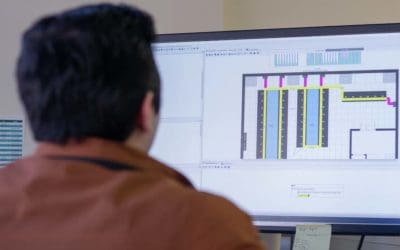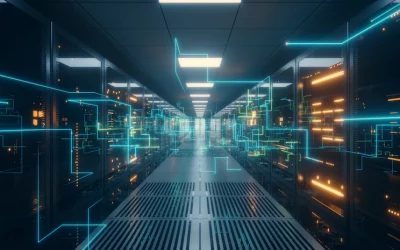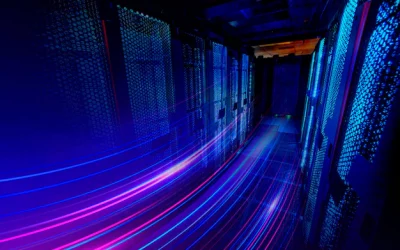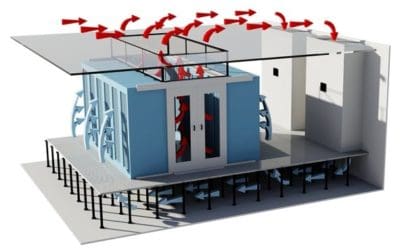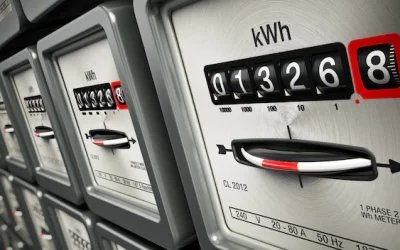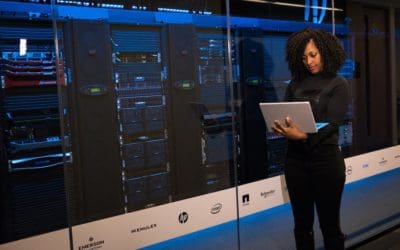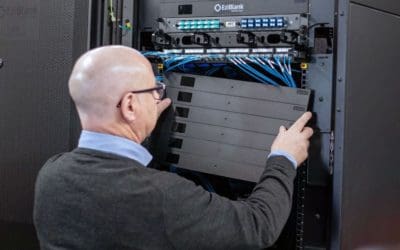info centre
News
Data Center Checklist
A comprehensive data centre checklist is an invaluable tool for ensuring that all critical aspects of data centre management are addressed. This checklist typically covers a wide range of areas, including physical infrastructure, power management, cooling systems, security measures, and network connectivity. Key items might include verifying the integrity of power supply and backup systems, ensuring efficient cooling with proper airflow management and blanking panels, and confirming that all security protocols, such as access controls and surveillance, are in place. Additionally, regular maintenance schedules, disaster recovery plans, and compliance with industry standards should be reviewed and updated. Using a detailed checklist helps data centre managers maintain operational efficiency, minimise downtime, and ensure that the facility is prepared to meet current and future demands.
How to create the perfect data center airflow management plan
Creating the perfect data centre airflow management plan is essential for optimising cooling efficiency, reducing energy consumption, and ensuring the longevity of your equipment. The process begins with a thorough assessment of the current airflow dynamics, identifying any hot spots or areas where air circulation is suboptimal. Key components of an effective plan include the strategic placement of blanking panels to prevent hot air recirculation, proper cable management to avoid airflow blockages, and the use of perforated floor tiles to direct cool air precisely where it’s needed. Additionally, implementing cold or hot aisle containment can further enhance airflow efficiency by separating hot and cold air streams. Regular monitoring and adjustments are crucial to maintaining optimal conditions as the data centre evolves. By focusing on these elements, you can create an airflow management plan that maximises performance and minimises costs.
Patch Panel: What it is and why your data center needs it
A patch panel is a critical component in any data centre’s network infrastructure, serving as a central hub where all network cables are connected and managed. This device allows for the efficient organisation and routing of network connections, making it easier to manage, maintain, and troubleshoot the network. By centralising connections in one location, a patch panel simplifies the process of changing network configurations or performing upgrades, reducing the potential for downtime. Additionally, it helps maintain a clean and organised cabling system, which is essential for optimal airflow and cooling efficiency within the data centre. Incorporating a patch panel into your data centre infrastructure enhances both the reliability and flexibility of your network, making it a vital investment for any modern data centre.
Green Data Center Concepts
Green data centre concepts focus on minimising the environmental impact of these energy-intensive facilities while maintaining high levels of performance and reliability. Key strategies include using renewable energy sources, such as solar or wind power, to reduce reliance on fossil fuels and incorporating energy-efficient technologies like advanced cooling systems that utilise free cooling or liquid cooling methods. Additionally, green data centres often employ design features that enhance energy efficiency, such as cold and hot aisle containment to optimise airflow and reduce cooling requirements. The adoption of energy-efficient hardware and the implementation of effective power management practices, including real-time monitoring and optimisation of power usage effectiveness (PUE), are also central to green data centre operations. By integrating these concepts, businesses can reduce their carbon footprint, lower operating costs, and contribute to a more sustainable future.
Hot Aisle vs Cold Aisle Containment
Hot aisle and cold aisle containment are two critical strategies used in data centres to enhance cooling efficiency and reduce energy consumption. In a cold aisle containment setup, cold air is contained within the aisle where the fronts of the server racks face each other, ensuring that only cool air is delivered directly to the equipment. This prevents the mixing of cold air with hot exhaust air, improving cooling efficiency. Conversely, hot aisle containment involves enclosing the aisle where the backs of the servers expel hot air. This containment captures and directs the hot air back to the cooling systems, preventing it from mixing with the cool air in the room. Both methods are effective, but the choice between hot and cold aisle containment depends on the specific design and cooling needs of the data centre. Implementing either strategy can lead to significant improvements in energy efficiency and overall system performance.
Designing an Energy-Efficient Data Center
Designing an energy-efficient data centre requires a strategic approach that combines advanced technology with best practices in layout and infrastructure management. The foundation of an energy-efficient design begins with optimising the physical layout, such as implementing hot and cold aisle containment to prevent the mixing of hot and cold air, which significantly reduces the burden on cooling systems. Incorporating energy-efficient hardware, such as servers and storage devices that consume less power, is also crucial. Additionally, leveraging renewable energy sources like solar or wind power can greatly reduce the carbon footprint of the facility. Effective monitoring and management tools are essential for tracking energy use and making real-time adjustments to improve efficiency. By focusing on these elements, a data centre can achieve optimal performance while minimising energy consumption and operational costs.
How to Maintain Your Data Center
Maintaining a data centre is crucial for ensuring its reliability, efficiency, and longevity. Regular maintenance involves several key practices, starting with routine inspections of power and cooling systems to prevent potential failures and optimise performance. Ensuring that all equipment, including servers and networking devices, is updated with the latest firmware and software patches is essential for security and functionality. Effective cable management and the use of blanking panels help maintain proper airflow, which is critical for cooling efficiency. Additionally, conducting regular backups and testing disaster recovery plans ensure that data is protected against unexpected events. By adhering to these maintenance practices, a data centre can operate smoothly, reduce downtime, and extend the lifespan of its infrastructure.
Guide to setting up a Data Center
Setting up a data centre requires careful planning and execution to ensure that the facility meets both current and future needs. The process begins with selecting an appropriate location that offers reliable power, cooling, and connectivity. The physical design of the data centre should incorporate efficient layout strategies, such as hot and cold aisle containment, to optimise airflow and cooling efficiency. Equipping the data centre with scalable infrastructure, including modular server racks and energy-efficient hardware, allows for future growth without major overhauls. Additionally, implementing robust power management systems, such as uninterruptible power supplies (UPS) and backup generators, is critical for ensuring continuous operation. Security measures, both physical and digital, must be in place to protect the data and infrastructure. Finally, ongoing monitoring and maintenance plans should be established to keep the data centre operating at peak performance. By following this guide, you can set up a data centre that is efficient, secure, and scalable.
Airflow Management Products
Airflow management products are essential tools for optimising cooling efficiency and maintaining the performance of data centres. These products include blanking panels, which are used to cover unused spaces in server racks, preventing hot air from recirculating and ensuring that cool air is directed precisely where it’s needed. Perforated floor tiles are another key product, allowing controlled cool air delivery from beneath the raised floor to the servers. Additionally, air curtains and containment systems, such as hot and cold aisle containment solutions, help separate hot and cold air streams, further enhancing cooling efficiency. By implementing these airflow management products, data centres can reduce energy consumption, improve equipment longevity, and maintain optimal operating conditions.
Data Center Cooling: Best Practices
Implementing best practices for data centre cooling is crucial to maintaining efficiency, reducing energy costs, and ensuring the longevity of equipment. Key practices include optimising airflow by using blanking panels to fill unused rack spaces, which prevents hot air recirculation and ensures that cool air reaches the servers effectively. Additionally, employing hot and cold aisle containment systems can further enhance cooling efficiency by separating hot exhaust air from cold intake air, reducing the workload on cooling systems. Regular maintenance of HVAC systems and air filters is essential to ensure that cooling units operate at peak performance. Monitoring temperature and humidity levels in real-time allows for adjustments that prevent overheating and ensure optimal conditions. By following these best practices, data centres can achieve significant improvements in cooling efficiency, leading to lower operational costs and improved equipment performance.
Hot Aisle Containment Solutions & Products
Hot aisle containment solutions typically include barriers, doors, and ceiling panels that effectively seal off the hot aisle, creating a controlled environment where the separation of hot and cold air is meticulously maintained. This separation ensures that hot exhaust air is directed away from the servers and into return air ducts, preventing it from mixing with the cool intake air and thereby enhancing the efficiency of the cooling system. Implementing these solutions not only significantly reduces energy consumption and lowers cooling costs but also enhances the overall performance, reliability, and lifespan of the data centre’s infrastructure, making it a vital strategy for modern data centres aiming to optimise their operations.
Data Center Energy Efficiency Measures
Improving energy efficiency in data centres is essential for reducing operational costs and minimising environmental impact. Several key measures can be implemented to enhance efficiency, starting with optimising airflow management through the use of blanking panels, which prevent the recirculation of hot air and ensure that cool air is directed precisely where it’s needed. Upgrading to energy-efficient hardware, such as servers and storage devices with lower power consumption, is another important step. Additionally, adopting advanced cooling techniques, such as liquid cooling or free cooling, can significantly reduce the energy required to maintain optimal temperatures. Monitoring tools that track power usage effectiveness (PUE) allow for real-time adjustments to improve efficiency further. These measures not only lower energy consumption and costs but also contribute to a more sustainable and resilient data centre operation.
Green Data Center Case Study
A green data centre case study highlights how implementing sustainable practices can lead to significant environmental and financial benefits. In one example, a data centre achieved substantial energy savings by integrating renewable energy sources such as solar and wind power into its operations. Additionally, the facility utilised advanced cooling technologies, including free cooling and liquid cooling systems, which drastically reduced the reliance on traditional, energy-intensive air conditioning. The implementation of hot and cold aisle containment systems further optimised airflow, minimising energy waste. Through these initiatives, the data centre not only reduced its carbon footprint but also realised considerable cost savings, demonstrating that sustainability and efficiency can go hand in hand. This case study serves as a model for other facilities aiming to transition towards greener, more energy-efficient operations.
How to Manage Airflow in a Data Center
Managing airflow in a data centre is crucial for maintaining optimal cooling efficiency and ensuring the longevity of equipment. Effective airflow management begins with the strategic placement of blanking panels in server racks to eliminate gaps, which prevents hot air from recirculating and ensures that cool air is directed precisely where it’s needed. Implementing hot and cold aisle containment systems further enhances airflow by separating the hot exhaust air from the cool intake air, reducing the workload on cooling systems. Proper cable management is also essential to avoid obstructions that can disrupt airflow patterns. Additionally, using perforated floor tiles in the raised floor environment helps channel cool air directly to the servers. Regular monitoring and adjustments based on real-time data are necessary to maintain efficient airflow and adapt to changes in the data centre’s layout or load. These strategies collectively help optimise cooling, reduce energy consumption, and improve the overall performance of the data centre.
Blanking Panels: The Ultimate Guide
Blanking panels are a crucial yet often overlooked component in data centre management, playing a vital role in optimising airflow and enhancing energy efficiency. These panels are designed to fill the empty spaces in server racks, preventing the recirculation of hot air into the cold aisle, which can otherwise lead to hotspots and reduced cooling efficiency. By directing cool air precisely to where it’s needed and ensuring that hot air is properly expelled, blanking panels help maintain optimal operating temperatures, reduce the workload on cooling systems, and ultimately lower energy costs. Available in various sizes and materials, blanking panels are easy to install and offer a cost-effective solution for improving data centre performance. Regular use and proper installation of blanking panels not only contribute to a more efficient and reliable data centre but also extend the lifespan of critical IT equipment.
The Advantages of a Green Data Center
A green data centre offers numerous advantages, both for the environment and for the businesses that operate them. By prioritising energy efficiency and sustainability, green data centres significantly reduce their carbon footprint, contributing to environmental conservation and aligning with global efforts to combat climate change. These facilities often utilise renewable energy sources, such as solar or wind power, which not only cuts down on greenhouse gas emissions but also reduces reliance on traditional, non-renewable energy sources. Additionally, green data centres implement advanced cooling technologies and airflow management strategies, such as hot and cold aisle containment, to optimise energy use and lower operational costs. The financial benefits are substantial, as reduced energy consumption translates directly into cost savings over time. Furthermore, operating a green data centre can enhance a company’s reputation, demonstrating a commitment to sustainability that resonates with environmentally conscious customers and partners. Overall, the shift towards greener data centres is not only a responsible choice for the planet but also a strategic business decision.
How to Reduce Energy Consumption in a Data Center
Reducing energy consumption in a data centre is essential for cutting operational costs and promoting sustainability. One of the most effective strategies involves optimising airflow management by using blanking panels to block unused rack spaces, which prevents hot air recirculation and ensures that cool air is directed where it’s needed. Implementing hot and cold aisle containment systems further enhances cooling efficiency by separating hot and cold air streams, reducing the energy required for cooling. Upgrading to energy-efficient hardware, such as low-power servers and storage devices, can also significantly lower energy consumption. Additionally, adopting advanced cooling technologies like liquid cooling or free cooling can drastically reduce the reliance on traditional air conditioning. Regular monitoring and analysis of power usage effectiveness (PUE) allow data centre managers to identify inefficiencies and make real-time adjustments to optimise energy use. These measures, when combined, can lead to substantial energy savings, lower operating costs, and a reduced environmental impact for the data centre.
What is Cold Aisle Containment
Cold aisle containment is a data centre cooling strategy designed to improve energy efficiency and optimise temperature control. In this setup, the cold aisle, where the fronts of the server racks are located, is enclosed to prevent the mixing of cold air with the hot exhaust air from the servers. This containment system ensures that the cool air from the air conditioning units is directed exclusively towards the servers’ intake, maximising cooling efficiency. By containing the cold aisle, data centres can maintain lower temperatures with less energy, reducing the workload on cooling systems and lowering overall energy consumption. This approach not only improves the performance and reliability of the equipment but also contributes to significant cost savings and a more sustainable data centre operation. Cold aisle containment is particularly effective in high-density data centres where cooling demands are substantial.



